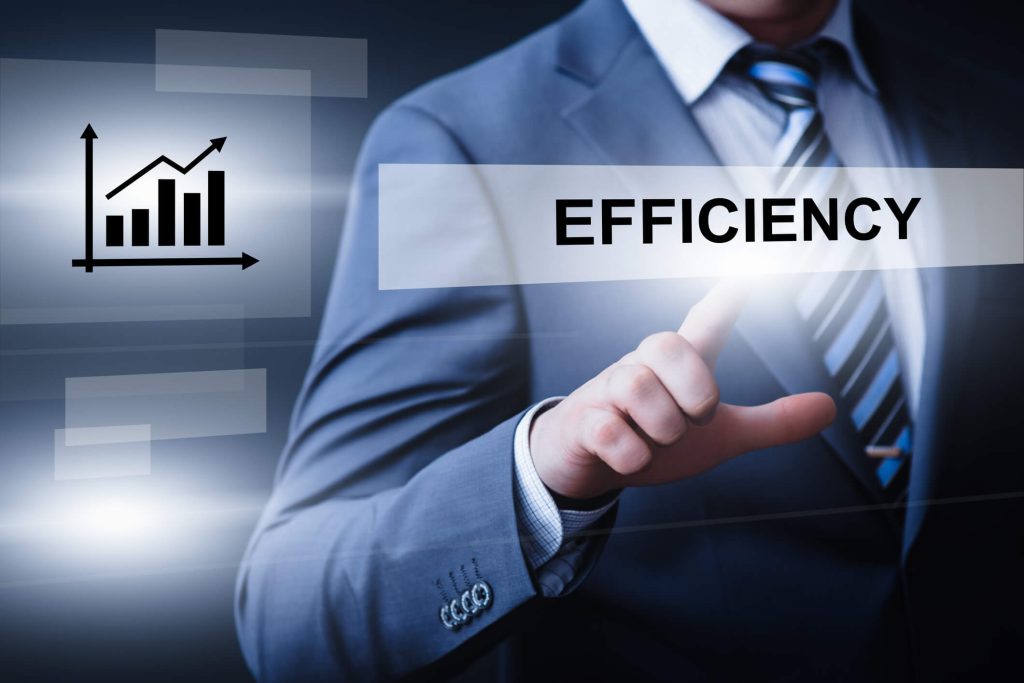The automotive industry is constantly evolving, and businesses within this sector need to adapt to stay competitive. One area that is often overlooked but can greatly benefit automotive businesses is payment processing. ACH payment processing, in particular, offers a secure and efficient way for automotive businesses to handle transactions. In this comprehensive guide, we will explore the ins and outs of ACH payment processing in the automotive industry, including its benefits, how it works, best practices, and frequently asked questions.
What is an ACH Payment?
ACH payments are electronic payments made through the Automated Clearing House network, a secure system for financial transactions managed by the National Automated Clearing House Association (NACHA). These payments allow money to be transferred between banks without using paper checks, credit card networks, or cash.
How Do ACH Payments Work?
ACH payments process financial transactions in batches, which are sent at specific times during the day. This method is different from real-time transactions and can typically take one to two business days to clear.
Benefits of ACH Payment Processing for Automotive Businesses
ACH (Automated Clearing House) payment processing is increasingly becoming a popular payment method for various industries, including the automotive sector. For automotive businesses, integrating ACH payment processing can streamline operations, reduce costs, and enhance customer satisfaction. Let’s explore the advantages of adopting ACH payment processing for automotive businesses:
1. Cost Efficiency

One of the primary benefits of ACH payment processing for automotive businesses is its cost-effectiveness. Compared to credit card transactions, ACH payments typically have lower transaction fees. For automotive businesses that handle large transactions, such as car purchases or extensive repairs, these savings can be significant, impacting the overall profitability of the business.
2. Faster Transaction Processing

ACH payment processing offers quicker clearing times than traditional checks. While checks can take several days to process, ACH transactions are often settled within one business day. This rapid processing helps automotive businesses improve their cash flow, enabling them to reinvest in their services or handle operational costs more efficiently.
3. Reduced Payment Declines
Automotive businesses that rely on recurring payments, such as for leases or installment plans, can benefit from the reliability of ACH payments. Unlike credit cards, which can expire or be cancelled, ACH payments are linked directly to the customer’s bank account, reducing the likelihood of payment interruptions due to card issues.
4. Enhanced Security
ACH payment processing for automotive businesses also offers enhanced security features. The ACH network is governed by strict regulations that help protect both businesses and consumers from fraud. Furthermore, the direct bank-to-bank transfer of funds reduces the risk of handling checks that may bounce or be fraudulent.
5. Improved Customer Convenience
Offering ACH payment options can improve the convenience for customers. It allows them to make payments directly from their bank accounts without needing to use credit cards or write checks. This is particularly beneficial for transactions that are typically larger, such as down payments on vehicles or major service jobs.
6. Streamlined Accounting Processes
Integrating ACH payment processing helps automotive businesses streamline their accounting processes. Payments made via ACH are easier to track and record compared to cash or checks. This simplification can reduce accounting errors and improve the efficiency of financial reporting.
7. Competitive Advantage
By adopting ACH payment processing, automotive businesses can gain a competitive edge. Offering a broader array of payment options caters to a wider range of customer preferences, potentially attracting customers who prefer direct bank account transactions over other payment methods.
Different Automotive Businesses and their Payment Processing Needs
The automotive industry encompasses a wide range of businesses, each with unique payment processing needs. Let’s take a look at some of the different automotive businesses and how ACH payment processing can benefit them.
- Car Dealerships: Car dealerships often handle large transactions and require a secure and efficient payment processing solution. ACH payments can streamline the payment process, allowing dealerships to receive funds quickly and securely.
- Auto Repair Shops: Auto repair shops frequently deal with recurring payments, such as monthly service fees or installment payments for repairs. ACH payment processing can automate these payments, reducing administrative tasks and ensuring timely payments.
- Rental Car Companies: Rental car companies rely on efficient payment processing to handle reservations and payments from customers. ACH payments can simplify the payment process, allowing rental car companies to receive funds directly into their bank accounts.
- Auto Parts Suppliers: Auto parts suppliers often have a large customer base and process a high volume of transactions. ACH payment processing can streamline the payment process, reducing administrative tasks and improving cash flow.
Understanding ACH Payment Processing: How Does it Work?
Now that we have explored the benefits of ACH payment processing for automotive businesses, let’s dive into how it works.
A Step-by-Step Guide to ACH Payment Processing
- Authorization: The customer provides their bank account information and authorizes the automotive business to initiate an ACH payment.
- Payment Initiation: The automotive business submits the payment information to their ACH payment processing provider. This includes the customer’s bank account details, the payment amount, and any additional information required.
- Payment Transmission: The ACH payment processing provider transmits the payment information to the ACH network.
- ACH Network Processing: The ACH network processes the payment information and transfers the funds from the customer’s bank account to the automotive business’s bank account.
- Payment Confirmation: The automotive business receives confirmation of the payment, indicating that the funds have been successfully transferred.
Integrating ACH Payment Processing into Automotive Business Operations
Integrating ACH payment processing into automotive business operations is a straightforward process. Most ACH payment processing providers offer easy-to-use APIs and plugins that can be seamlessly integrated into existing software systems. This allows automotive businesses to automate payment processes and provide a seamless experience for their customers.
To integrate ACH payment processing into automotive business operations, follow these steps:
- Choose a reputable ACH payment processing provider that offers integration capabilities.
- Install the necessary software or plugin provided by the ACH payment processing provider.
- Configure the software or plugin to match the specific needs of your automotive business.
- Test the integration to ensure that payments are processed correctly and funds are transferred to the correct bank account.
- Train your staff on how to use the ACH payment processing system and provide ongoing support as needed.
Best Practices for ACH Payment Processing in the Automotive Industry
While ACH payment processing offers numerous benefits for automotive businesses, it is important to follow best practices to ensure security, compliance, and optimal efficiency.
Ensuring Security and Compliance in ACH Payment Processing
Security and compliance should be top priorities when implementing ACH payment processing in the automotive industry. To ensure the security of customer data and comply with industry regulations, follow these best practices:
- Choose a reputable ACH payment processing provider that has robust security measures in place, such as encryption and tokenization.
- Regularly update and patch software systems to protect against vulnerabilities and potential security breaches.
- Train employees on best practices for handling customer data and ensure that they are aware of the importance of data security.
- Implement multi-factor authentication to add an extra layer of security to the payment process.
- Regularly monitor and audit payment processing systems to identify and address any potential security issues.
Optimizing Efficiency and Reducing Costs with ACH Payment Processing
To optimize efficiency and reduce costs with ACH payment processing, consider the following best practices:
- Automate recurring payments to reduce administrative tasks and ensure timely payments.
- Consolidate payment processing systems to streamline operations and reduce the risk of errors.
- Implement real-time reporting and analytics to gain insights into payment trends and identify areas for improvement.
- Negotiate competitive pricing with your ACH payment processing provider to ensure cost-effectiveness.
- Regularly review and update payment processing policies and procedures to ensure they align with industry best practices.
Tips for Choosing the Right ACH Payment Processing Provider
Choosing the right ACH payment processing provider is crucial for the success of your automotive business. Consider the following tips when selecting a provider:
- Evaluate the provider’s reputation and track record in the automotive industry. Look for reviews and testimonials from other automotive businesses to gauge their level of satisfaction.
- Assess the provider’s pricing structure and ensure that it aligns with your budget and transaction volume.
- Consider the provider’s integration capabilities and ensure that their solution can be seamlessly integrated into your existing software systems.
- Evaluate the provider’s customer support services and ensure that they offer timely and reliable support.
- Look for additional features and services offered by the provider, such as real-time reporting, analytics, and fraud prevention tools.
Frequently Asked Questions
Q.1: What are the fees associated with ACH payment processing?
Answer: The fees associated with ACH payment processing vary depending on the provider and the specific services required. Typically, ACH payment processing fees include a per-transaction fee and a monthly fee. It is important to carefully review the fee structure and compare it with other providers to ensure cost-effectiveness.
Q.2: How long does it take for ACH payments to clear?
Answer: ACH payments typically take 1-2 business days to clear, although the exact timeframe may vary depending on the specific circumstances. It is important to communicate the expected payment processing time to customers to manage their expectations.
Q.3: Can ACH payment processing be integrated with existing automotive software?
Answer: Yes, ACH payment processing can be integrated with existing automotive software. Most ACH payment processing providers offer APIs and plugins that can be seamlessly integrated into existing software systems, allowing for a streamlined payment process.
Q.4: What security measures are in place to protect customer data?
Answer: ACH payment processing providers have robust security measures in place to protect customer data. These measures may include encryption, tokenization, multi-factor authentication, and regular monitoring and auditing of payment processing systems. It is important to choose a reputable provider that prioritizes data security and compliance.
Q.5: Are ACH payments reversible?
Answer: Yes, ACH payments can be reversed under certain conditions such as unauthorized transactions or errors.
Q.6: How long do ACH transactions take?
Answer: Typically, ACH transactions take one to two business days to clear.
Q.7: Is there a limit to the amount you can process via ACH?
Answer: No, there is no inherent limit to the amount that can be processed, making it suitable for both small and large transactions.
Conclusion
In conclusion, ACH payment processing offers numerous benefits for automotive businesses, including improved efficiency, reduced costs, and enhanced security. By understanding the process, integrating it into operations, and following best practices, automotive businesses can streamline their payment processes and provide a seamless experience for their customers. With the right provider, automotive businesses can stay ahead in the competitive industry while ensuring compliance and customer satisfaction. Embracing ACH payment processing is a smart move for automotive businesses looking to optimize their payment processes and drive success in the digital age.
